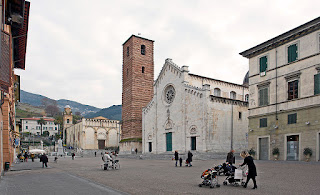The long life of the last Habsburg Empress
.jpg) |
| A portrait of Zita taken in 1911, shortly before her marriage |
Zita was the 17th child of the Duke of Parma, Robert I, and his second wife, Infanta Maria Antonia of Portugal, but her family was poor, even if it did claim descent from Louis X of France. The family villa was situated between Pietrasanta and Viareggio, occasionally moving to stay in Robert’s other property, Schwarzau Castle in Austria.
After her father’s death, Zita was sent to a convent on the Isle of Wight in England to complete her education.
For a time, Zita considered following the lead of three of her sisters and becoming a nun, but at the age of 19 she married Archduke Charles, the great nephew of Emperor Franz Joseph of Austria. The two had known each other as children and became reacquainted in 1909, at a time when Charles was under pressure to find a wife.
They were married at the Schwarzau Castle in October 1911 and went on to have eight children together.
Within three years, in 1914, the Emperor’s heir, Franz Ferdinand, was shot dead in Sarajevo in the incident that led to the outbreak of the First World War. The Emperor himself died two years later and Zita’s husband, Charles, succeeded him as Emperor. Zita suddenly found herself an Empress in the middle of a world war, in which she had relatives on both sides.
 |
| Zita and Archduke Charles at their wedding in Austria |
Charles died less than three years later, in 1922, while the couple were living in Madeira and from that day onwards Zita lived on alone, mostly in exile. She never remarried but continued to raise her family. She spent 63 years mostly living in Switzerland and the United States, never relinquishing her claim to a throne that no longer existed.
She died at the age of 96 in March 1989. After a huge state funeral in St Stephen’s Cathedral in Vienna, Zita was buried in the crypt alongside 142 other members of the Habsburg dynasty. An impoverished Italian noblewoman, Zita was the last Habsburg to wear a crown in a line that had worn it first in the year 1282.
Zita was declared Servant of God by Pope Benedict XVI and in 2009 the process was opened for her beatification.
 |
| Viareggio's Grand Hotel Royal, a notable example of the Tuscan resort's Liberty-style architecture |
Viareggio, where Zita was born and brought up, is now a popular seaside resort in Tuscany with beautiful sandy beaches and fine examples of Liberty-style architecture, which include the Grand Hotel Royal. Near the Villa Paolina, which was the home of Napoleon’s sister, Paolina Bonaparte, there is a monument to the English poet Percy Bysshe Shelley, close to the point on the coastline that his body was found following his death in a shipwreck. Paolina, who was a great admirer of Shelley’s work, is said to have chosen the location for the villa for that reason.
 |
| Pietrasanta's Duomo - the Collegiata di San Martino - dates back to the 13th century |
Pietrasanta is a town in northern Tuscany, to the north of Viareggio. It had Roman origins and part of a Roman wall still exists. The medieval town was built in 1255 upon the pre-existing Rocca di Sala fortress of the Lombards and the Duomo (Collegiate Church of San Martino) dates back to the 13th century. Pietrasanta grew in importance in the 15th century due to its marble, the beauty of which was first recognised by the sculptor, Michelangelo. At different times belonging to Genoa and Lucca, Pietrasanta came under Medici control in 1484 before being seized by Charles VIII of France in 1494. Pope Leo X, a member of the Medici family, gave Pietrasanta back to his family. The town declined during the 17th and 18th centuries, partly due to malaria. The seaside resort of Marina di Pietrasanta is 3km (1.9 miles) away.
Also on this day:
1740: The birth of opera composer Giovanni Paisiello
1914: The birth of orchestra conductor Carlo Maria Giulini
1946: The abdication of Vittorio Emanuele III, King of Italy
2013: The death of fashion designer Ottavio Missoni




















